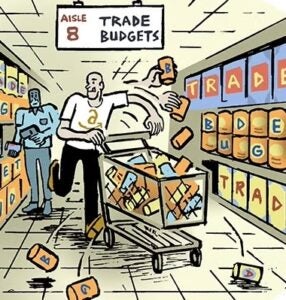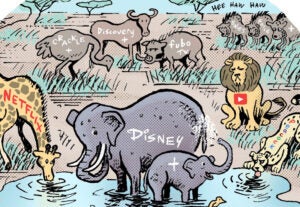 “Data-Driven Thinking” is written by members of the media community and contains fresh ideas on the digital revolution in media.
“Data-Driven Thinking” is written by members of the media community and contains fresh ideas on the digital revolution in media.
Today’s column is written by Nishat Mehta, EVP Global Partners at Dunnhumby.
When my family and I moved to New York City, one of the first items we purchased was a Sodastream home carbonation machine. For years we had been loyal and heavy brand buyers of the same sparkling water brand but found very quickly that walking, rather than driving, home from the grocery store is not conducive to purchasing heavy bottles of sparkling water. What could a smart sparkling water brand do to help someone like me make a different decision?
For businesses looking to better understand their consumers, behavioral data is a game-changer. The more we understand about our consumers, especially those most loyal, the better equipped we are to outpace our competitors, including competitors that may meet a consumer’s need in a different way – such as fast casual restaurants versus grocery-purchased meals-on-the-go. Even before the recent big data explosion, behavioral data allowed us to understand if a household is an early adopter, values healthy ingredients, counts calories, buys on promotion (and if so, how and why), prefers digital promotions or buys outside the store, category or brand. In the next evolution, brands will know not only when the consumer buys outside the store, but also where they go, why, and the products they purchase.
Brands compete not only against comparable products within the category or the vertical, but are also competing to understand the consumer at every touch point. A consumer does not just choose between Dreyer’s and Breyer’s ice cream at the grocery store. Rather, a consumer can buy ice cream at a grocery store or a convenience store, buy cookies instead, eat dessert at a restaurant, or buy from an Italian ice street vendor.
Effective data-driven marketing in the near future will be dependent on customer DNA with the help of cross-retailer, cross-channel data. Point-of-sale software solutions are heading towards SKU-level sophistication and mobile wallets. Location data collected through mobile devices are both rich and personal. Social media enables views into brand advocacy, sentiment and other parts of a consumer’s life they are willing to share. Armed with these and other data sources, brands will be able to develop a view into transactions and brand penetration at the household-level across lifestyle choices like restaurants, hotels, travel and recreational activities.
However just having access to this data will not be enough to activate on it. Marketers will need a database with scale and a longitudinal dimension that allows them to understand how behavior changes over time and the factor driving that change. By marrying these new data sources with CRM, social, and loyalty card data for a single-source, continuous panel, the marketer at the ice cream brand now understands their true competition. It could also give that brand a head start on understanding dramatic lifestyle changes, like someone planning for a move from California to New York City.
Additional benefits are everywhere. Brands can develop profiles based on lifestyle attributes and purchase behavior to reveal interesting correlations, such as “do-it-yourself home improvement consumers” also tend to take adventurous vacations, prefer gourmet food and like to cook at home with authentic ingredients. Brands can measure their media to determine if a TV ad helped to drive trial at a grocery store and a baseball game or if an offer through email performed better. Market researchers and government agencies will have more precise tools for interpreting and predicting larger economic and consumer trends. Replacing survey-based studies will help businesses truly understand if more consumers are opting for quick service restaurants or grocery stores over dine-in and what drives each of these behaviors.
None of this will be possible without putting the consumer at the center of every decision. Consumers share their data because they expect a direct benefit and clear accountability. Companies that want to leverage consumer data will need to build a solid foundation of trust and transparency by ensuring that this additional data is being used to become more relevant to the consumer. If a brand isn’t consistently accountable to the consumer, the virtuous cycle of relevance will become unsustainable with the consumer eventually revoking access to their data. Relevance and transparency must come before any business or marketing objective.
From our own case history as Tesco’s partner for the past two decades in the Clubcard program, retailers with strong loyalty programs and transaction data have a head start in this space, due to their comfort level with large amounts of data and their history of using behavioral-driven insights. They also understand that long-term growth comes from being accountable to the consumer and that this relationship is delicate. And we know this approach works. According to a recent survey from Harris Interactive and Placecast, consumers trust grocery stores to use their data more than any type of company.
Behavioral data today relies mostly on prior behavior within the same channel to predict future behavior. This ignores everything else you can learn about a consumer with the right approach. For the sparkling water drinker moving to New York, in a few years a brand should have enough data to determine if they should offer delivery, send a coupon for a smaller or lighter pack size, offer ideas for how to make it easier to carry the product while walking or even determine if investing in a Sodastream competitor of their own makes sense, based on much more than just shopping behavior. This will not happen overnight, but it has to happen because consumers will expect nothing less from their trusted retailers and brands.
Follow Nishat Mehta (@nishatmehta) and AdExchanger (@adexchanger) on Twitter.












